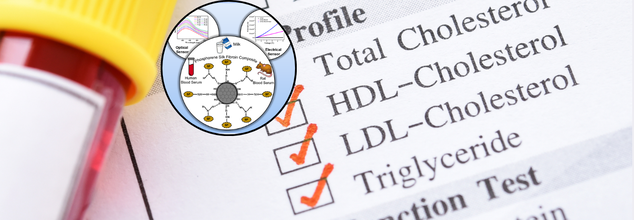- Health Conditions A-Z
- Health & Wellness
- Nutrition
- Fitness
- Health News
- Ayurveda
- Videos
- Medicine A-Z
- Parenting
- Web Stories

Credits: Canva
FDA Approves Dupixent For Chronic Spontaneous Urticaria In Adolescents And Adults
The US Food and Drug Administration (FDA) has granted approval to Dupixent or dupilumab for the treatment of chronic spontaneous urticaria (CSU) in adults and adolescents who are aged 12 years or are older. The approval caters to those who would have to continue to experience symptoms despite being on histmamine-1 (H1) antihistamine therapy. These are medications that block the effects of histamine on H1 receptors and are primarily used to treat allergies or allergic reactions.
What is Dupixent?
It is a biologic medication which targets specific pathways in the immune system. It is a monoclonal antibody, which is designed to inhibit the signaling of two key proteins, namely: interleukin-4 (IL-4) and interleukin-13 (IL-13). These two play a central role in type 2 inflammation, which is believed to contribute to a variety of allergic and inflammatory conditions. It is also approved for other conditions like atopic dermatitis, asthma, and chronic rhinosinusitis with nasal polyposis.
What is Chronic Spontaneous Urticaria?
As per the 2017 study published in Canadian Medical Association Journal, titled Chronic spontaneous urticaria, the condition is defined by the presence of hives daily or almost for at lease six weeks. The study also mentions that the condition mostly affects the working population and may have a substantial impact on quality of life.
As per the American College of Allergy, Asthma & Immunology, it affects about 20% of people at some time during their lives. It can also be triggered by many substances or situations and usually starts as an itchy patch of skin that turns into swollen red welts.
Rarely, cases of hives last more than six weeks and could end up staying for up to 5 years. This condition is known as chronic spontaneous urticaria or idiopathic urticaria. It can affect 1.4% of the general population and is seen in women twice as commonly as men.
For many individuals, the condition is both physically uncomfortable and emotionally distressing, often interfering with sleep, daily activities, and overall quality of life. In some patients, standard antihistamines fail to control the symptoms, leaving them in need of more effective treatment options.
How Was Dupixent Approved?
The FDA has based its decision on the results of two phase 3 clinical trials that studied the drug ass an add-on to the standard antihistamine therapy. The trials also included patients who had not previously been treated with biologic therapies and who continued to show symptoms despite being on antihistamines.
In both studies, Dupixent met its primary and key secondary endpoints. Patients receiving the medication showed a significant reduction in the severity of itching and urticaria activity after 24 weeks, compared to those who received placebo plus antihistamines. Additionally, those on Dupixent were more likely to achieve well-controlled disease or a complete response by the end of the study period. The safety profile observed in these trials was consistent with what has already been documented in other approved uses of Dupixent.
The approval of Dupixent for CSU represents a significant advancement for patients and healthcare providers. It offers new hope for those who have been living with poorly controlled symptoms, enhancing their ability to manage the condition more effectively and improve overall quality of life.

Credits: Canva
Novavax Says FDA Approval Back on Track for Its COVID Vaccine
Novovax, the maker of the only protein-based COVID-19 vaccine available in the US announced that its shot is on track for full approval from the US Food and Drug Administration (FDA). It is an important development for the company. It has sent its stock soaring up to 21% on Wednesday morning for trading. It is said that this will also ease the fears of political interference that may have caused delay in the process.
Vaccine For Emergency Use Only
While the other mRNA vaccines from Pfizer and Moderna have received full FDA approval for specific age groups, Novovax's vaccine still awaits the approval. It is only authorized for emergency use.
The emergency use authorization or the EUA allows vaccines to be distributed during public health emergencies. However, once the emergency ends, the FDA can remove them from the market unless full approval is granted.
Why Did The Delay Happen?
The FDA originally planned to approve Novovax's vaccine by April 1. However, as per the inside sources, the process was paused at the direction of Dr Sara Brenner, the FDA's acting commissioner. The delay has also raised concerns, especially after Dr Peter Marks, the FDA's longtime vaccine chief, reportedly left his post due to disagreements with the Health Secretary Robert F Kennedy Jr, who is a known vaccine skeptic.
What Makes Him A Vaccine Skeptic?
In the past, RFK Jr. has worked closely with many anti-vaccine activists who work for his nonprofit group Children's Health Defense. While in his recent speech, he said that he has "never been anti-vax and have never told the public to avoid vaccination", his track record shows otherwise.
In a podcast interview, he said, "There is no vaccine that is safe and effective" and told FOX News that he still believes in the now long-debunked idea that vaccines can cause autism. In another 2021 podcast, he urged people to "resist" CDC guidelines on getting their kids vaccinated. "I see somebody on a hiking trail carrying a little baby and I say to him, better not get them vaccinated," he said.
His non-profit also led an anti-vax campaign sticker and he appeared next on the screen to a sticker that read: "If you are not an anti-vaxxer you are not paying attention," reports AP.
What Does The Vaccine Need For Approval?
The FDA recently asked Novavax to outline a plan to collect additional clinical data from people who have received the vaccine. Novavax says it is “engaging with the FDA expeditiously” and hopes to secure full approval as soon as possible. Full FDA approval is considered the gold standard, as it reflects a higher level of scrutiny and confidence in a product’s safety and effectiveness.
How Is This Vaccine Different From Others?
The COVID-19 vaccines that are currently available in the US teach the immune system to recognize the virus' spike protein, which is its outer coating. the Pfizer and Moderna's mRNA vaccine deliver genetic instructions that help the body create a temporary version of spike protein that trigger an immune response. In contrast, the Novovax's shot contains lab-grown copies of the spike protein itself, which are then combined with a substance that boosts the immune response.
This traditional approach—called a protein-based vaccine—has been used for decades in vaccines for diseases like hepatitis B and shingles. For people who are hesitant about mRNA vaccines, Novavax offers an alternative that uses a well-established method.

Scientist Reveal New Optical Sensor Can Spot High Cholesterol And Predict Disease Risk Instantly
A future where heart attacks, strokes, and even cancer might be predictable is coming near—not only cured—thanks to a small, new eco-friendly sensor that can detect harmful levels of cholesterol in real-time. Scientists in India have created a revolutionizing optical sensor that can immediately identify high cholesterol, which could change the way we check for heart disease around the world.
At the core of this innovation is a unique biosensing platform that's not just extremely sensitive and affordable but also eco-friendly. Created by scientists at the Institute of Advanced Study in Science and Technology (IASST), Guwahati, in India this next-generation optical sensing tool is constructed using silk fiber functionalized with phosphorene quantum dots. Their work, reported in the highly regarded Nanoscale journal by the Royal Society of Chemistry, breaks new ground for non-invasive, real-time disease monitoring.
Why Early Detection of Cholesterol is Important to Overall Health?
Elevated cholesterol levels, particularly high LDL (low-density lipoprotein) or "bad" cholesterol, are frequently associated with silent but lethal diseases such as atherosclerosis, myocardial infarction, hypertension, venous thrombosis, and even some cancers. But the greatest concern? Most individuals never realize they're at risk until it's too late.
Cholesterol serves a double function in human physiology. It is required for the manufacture of vitamin D, bile acids, and steroid hormones and for the preservation of blood and nerve cell integrity. But too much—especially increased LDL (low-density lipoprotein, or "bad") and decreased HDL (high-density lipoprotein, or "good") cholesterol—can cause arteries to become clogged with plaque, blocking the flow of blood and causing life-threatening events.
That's why it is essential to detect these issues early on. And this new optical sensor might prove a breakthrough in the global battle against chronic illnesses by detecting risk signs before symptoms develop.
What makes this device a scientific milestone is the integration of materials and techniques that are innovative and environmentally friendly. The scientists employed silk fiber as the substrate and functionalized it with phosphorene quantum dots, which are renowned for their superior electrical and optical properties.
The sensor was also incorporated into a cellulose nitrate membrane to create an electrical sensing platform that can detect trace amounts of cholesterol—even below the normal detection limit. That's correct: this device can detect cholesterol changes before they reach clinical levels, making it perfect for regular health monitoring and preventive medicine.
This device produces no electronic waste, providing a green alternative to traditional diagnostic technologies.
How Does the Device Works?
In contrast to most experimental laboratory creations that fail to translate to real-world use, this device is highly compatible with real biological samples. It was able to detect cholesterol levels in human blood serum, rat blood, and even milk—showing its strength and versatility across mediums.
Such reliability makes it extremely versatile for application in point-of-care (POC) environments, possibly in clinics, pharmacies, or even at home. That translates to no more complicated lab tests or weeks of waiting for results.
One of the main causes of abnormal cholesterol is familial hypercholesterolemia, a genetic condition in which the liver has difficulty breaking down cholesterol. This makes regular checks even more crucial, particularly for those with a family history of heart disease, says the British Heart Foundation.
Obesity, inflammation, smoking, alcohol consumption, and sedentary lifestyles all increase LDL levels while simultaneously reducing protective HDL cholesterol. In many cases, the symptoms remain invisible—making it a ticking time bomb inside the body.
Visible signs such as deposits of fat beneath the skin (xanthomas), yellowish spots on or near the eyelids (xanthelasmas), or white circles around the iris (corneal arcus) may appear in rare cases. But for many individuals, high cholesterol has no warning signals.
Can Lifestyle Changes Replace Statins?
Though statins, drugs that inhibit the liver production of cholesterol—are common and have been shown to be effective, they're not the only solution. Lifestyle modification continues to be the cornerstone. Physicians suggest:
Physical activity on a daily basis: A minimum of 30 minutes to increase HDL and decrease LDL.
Changes in diet: Increased fiber, reduced saturated fats, and decreased processed foods.
Smoking and alcohol avoidance: Both are bad habits that make LDL worse and are detrimental to heart health.
The objective isn't merely treatment but prevention, and that is where early diagnosis using devices like this optical sensor comes into play.
This emerging optical sensor, capable of detecting cholesterol, is more than an academic achievement—it's a sea change. It signals a new world where your health is cared for proactively, sustainably, and customarily. Beyond its current ability to be handheld, this equipment may be designed into wearable devices, home health test kits, or even phones that are smarter with health attachments.

Credits: Canva
Common Medicines 'In Your Cabinet' Are Putting Your Heart At High Risk
Our medicine cabinets are stocked with a combination of prescription medications, over-the-counter painkillers, antidepressants, and supplements—all designed to keep us healthy but new research is now revealing an important and overlooked reality that some of the most widely used medications might be harming us more than they're helping, particularly when it comes to your blood pressure and heart health.
High blood pressure—or hypertension—affects over 1 billion people globally, and it’s one of the biggest risk factors for heart disease, stroke, and premature death. Yet, despite taking medications that are designed to manage it, many patients continue to struggle with uncontrolled blood pressure levels. Why? Experts are beginning to suspect that the answer might lie in a surprising culprit, the other medications we’re taking at the same time.
A new study by University of Pennsylvania researchers, reported in Hypertension Research, shows how widely used blood pressure medications might actually disrupt a critical heart-protective enzyme known as ACE2. And that's not all—other popular medications such as NSAIDs (say ibuprofen), antidepressants, steroids, and even decongestants might also be quietly jacking up blood pressure in millions of people without alerting them.
Cardiovascular disease is still the major killer globally, and high blood pressure—or hypertension—is a big contributor. Estimated to afflict more than a billion individuals worldwide, the hypertension burden is particularly crushing in low- and middle-income nations. Even with the universal availability of prescription drugs, many patients still struggle with uncontrolled blood pressure. Increasing evidence now implies that the very drugs we trust—prescription and over-the-counter—may be stealthily sabotaging cardiovascular health.
Could Your Blood Pressure Medications Be Damaging Your Heart?
Recent research indicates that most widely prescribed drugs can get in the way of blood pressure control. One in five hypertensive adults may be taking drugs that increase blood pressure, yet unaware of this.
From over-the-counter analgesics to antidepressants and oral steroids, the roll call of offenders is long. NSAIDs such as ibuprofen, some antidepressants, corticosteroids, decongestants, and even some oral contraceptives have all been shown to raise blood pressure levels. This poses very serious questions about how polypharmacy—taking several medications simultaneously—is likely to impact long-term cardiovascular health.
Experts point out, even moderate rises in blood pressure can contribute to major consequences on heart disease and stroke susceptibility. We should be more observant regarding reviewing medication, particularly in older populations who are already at risk.
ACE inhibitors (ACEIs) and angiotensin receptor blockers (ARBs) are widely used to manage hypertension by acting on the renin-angiotensin system (RAS). But research in Hypertension Research by researchers at the University of Pennsylvania brings new understanding to a crucial part of the puzzle: the ACE2 enzyme.
ACE2 performs a dual function—it both regulates blood pressure and is cardioprotective. It metabolizes angiotensin II, a strong vasoconstrictor, to angiotensin 1–7, which is a vasodilator and decreases blood pressure.
Dr. Henry Daniell and colleagues discovered that in companion animals already on ACEIs or ARBs, supplementing with oral ACE2 (administered through a new plant-based system) produced startling and alarming outcomes. Certain ACE inhibitors seemed to block the action of the ACE2 enzyme, essentially negating the therapeutic advantage of its supplementation. ARBs, on the other hand, appeared to enlarge the pool of angiotensin II—exactly what hypertensive patients try to escape.
Not all the ACE inhibitors reacted in a similar way. One of the most commonly prescribed medications in America, lisinopril, caused the smallest level of ACE2 inhibition and potentially could be considered a safe one for sustained cardiovascular support.
"You don't want to block ACE2, and you don't want to add to the angiotensin II pool. And we saw both there," explained Daniell.
ACE2 has been under the limelight ever since the COVID-19 pandemic, as the virus exploits this enzyme to gain entry into human cells. The inhibition of ACE2 by some blood pressure drugs eerily resembles what scientists witnessed in the initial stages of the pandemic.
Dr. Daniell and his colleagues are currently pursuing FDA approval to test their plant-based delivery system for ACE2 in humans, the first FDA-approved human blood protein expressed in plant cells to move into clinical trials. Their research may open the door to a new generation of cardiopulmonary therapies that are safer, more targeted, and possibly more effective.
Are You Taking a Medication That's Raising Your BP?
A concerning 19% of individuals with high blood pressure take at least one drug that has been shown to increase blood pressure, with women faring worse (24% vs. 14% of men). Sometimes the problem isn't the high blood pressure—it's the additive effect of too many drugs with overlapping actions.
Health experts are now advocating for a more cautious, individualized approach. Rather than simply increasing the dose or number of medications, doctors are exploring “deprescribing” as a strategy—removing or replacing drugs that may be doing more harm than good.
Natural Ways to Manage High Blood Pressure
If you’re worried about your heart health or want to complement your existing treatment, there are natural ways to support healthy blood pressure:
1. Follow a DASH Diet
Fruits, vegetables, whole grains, and low-fat dairy foods are the mainstays of the clinically tested Dietary Approaches to Stop Hypertension (DASH) diet, which lowers blood pressure.
2. Reduce Sodium
Cutting back on salt to less than 2,300 mg/day can make a quantifiable impact on your blood pressure level.
3. Boost Potassium
Bananas, spinach, avocados, and sweet potatoes are great sources of potassium, which counteracts sodium.
4. Get Moving
Try for at least 30 minutes of moderate exercise (such as brisk walking) five days a week. Regular exercise makes your heart stronger and boosts circulation.
5. Stay at a Healthy Weight
Even a small amount of weight loss can help reduce blood pressure in overweight people.
6. Reduce Stress
Recurring stress is a well-known cause of hypertension. Methods such as deep breathing, meditation, yoga, or even daily hobbies can reduce stress greatly.
7. Reduce Alcohol and Stop Smoking
Both tobacco and alcohol can raise blood pressure and harm your cardiovascular system. Reducing or stopping them all together has great heart health rewards.
While new research is still coming out, the connection between medications and heart health is becoming more intricate than originally realized. Whether you're dealing with hypertension or just want to shield your heart, it's important to examine all medications—both prescription and over-the-counter—and stay up to date regularly.
© 2024 Bennett, Coleman & Company Limited

